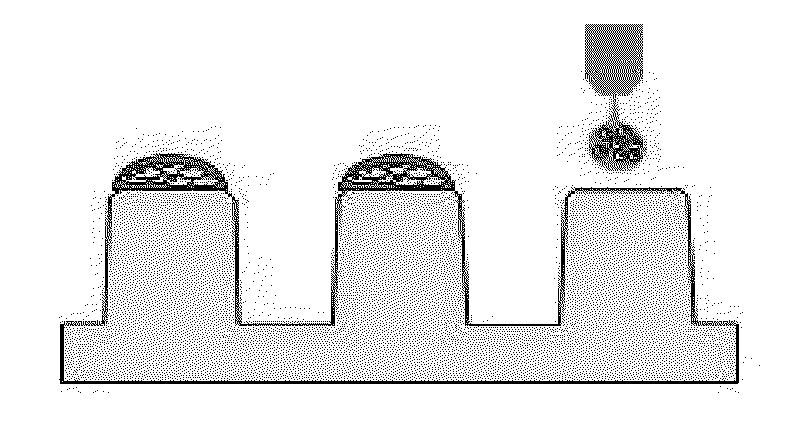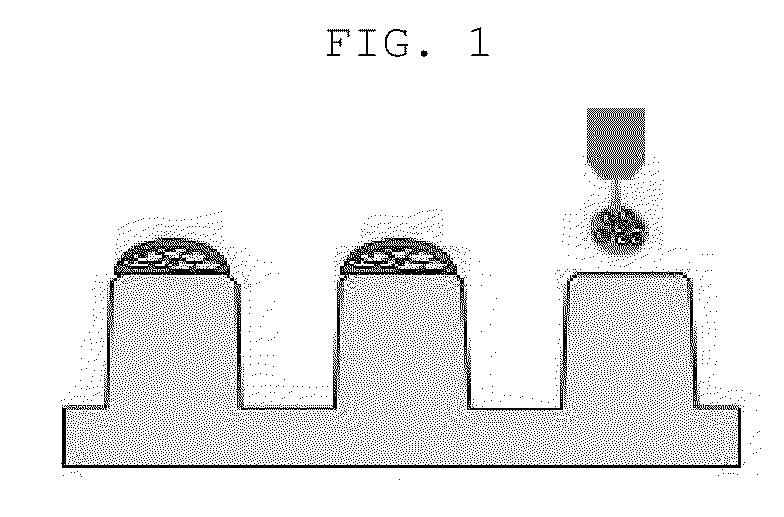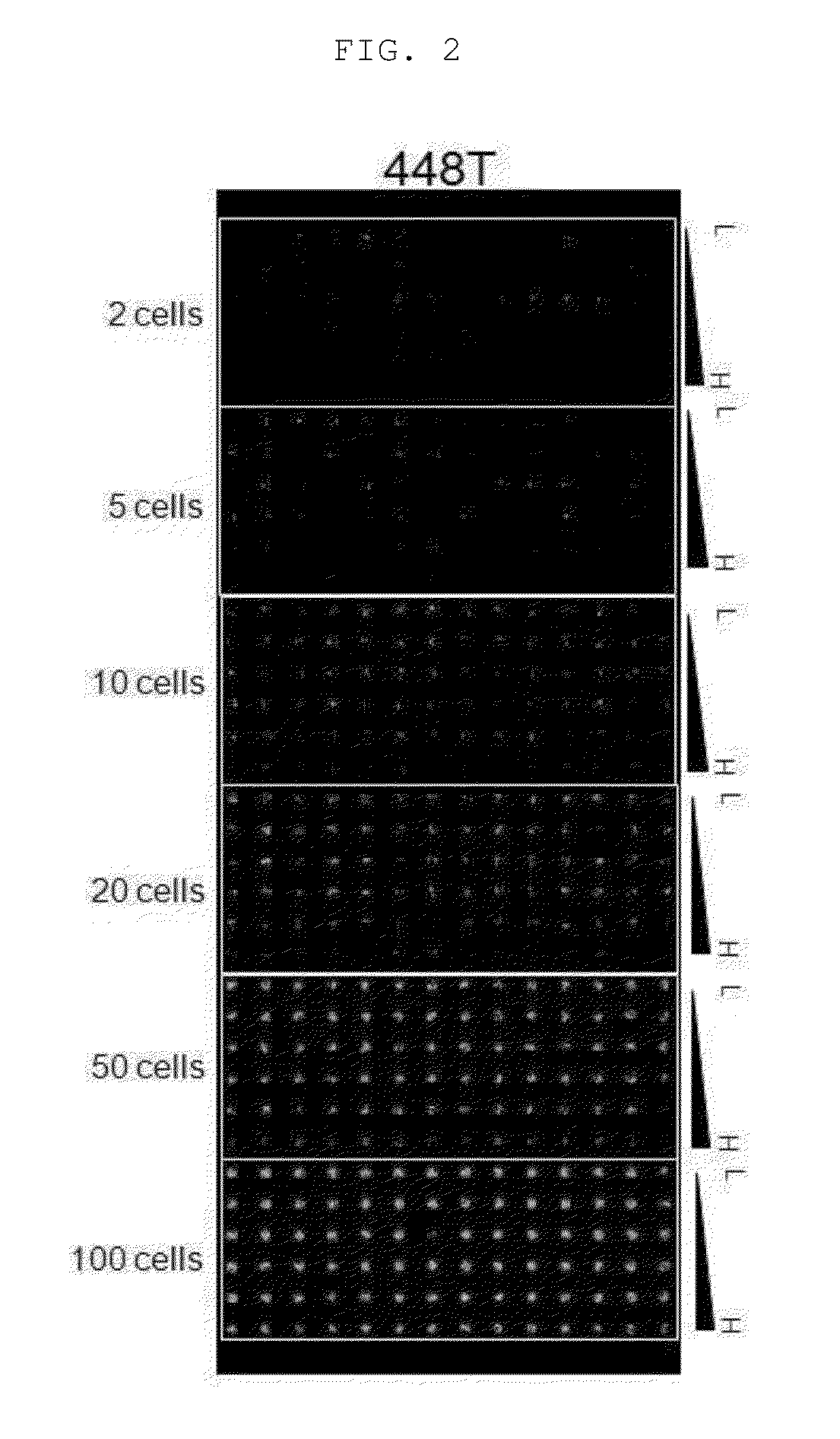Method for screening patient-specific Anti-cancer agent using limiting dilution assay
a screening method and anti-cancer technology, applied in the field of screening methods, can solve the problems of limiting the sensitivity of drugs according to gene information, increasing the risk and burden of patients, and affecting the effect of clinical trials,
- Summary
- Abstract
- Description
- Claims
- Application Information
AI Technical Summary
Benefits of technology
Problems solved by technology
Method used
Image
Examples
example 1
Isolation and Culture of Cells
[0060]Tumor tissues extracted from a surgical process of a brain glioblastoma patient was washed with PBS within 6 hours, and mechanically pulverized using surgical scissors or automatic pulverization device. The pulverized tumor tissues were subjected to enzymatic degradation by being treated with collagenase (Invitrogen, US) and trypsin (Invitrogen, US). The dissociated tissues were subjected to centrifugation under a condition of 400×g for 3 minutes, the obtained precipitate was washed with PBS several times and passed through poresizenylon mesh having a pore size of 100 μm, thereby obtaining a cell suspension dissociated at a level of a single cell.
[0061]For culture of cancer cells, the obtained reactant was subjected to suspension-culture at a concentration of 1˜3×105 cells / ml using a nerve stem cell culture medium (Neurobasal-A) [Gibco, US] containing cell growth factor (bFGF / EGF) [R&D systems, US] and additive (L-glutamine / B27 / N2) (Gibco, US), th...
example 2
[0062]A surface of ends of a micropillar chip (Samsung Electro-Mechanics Co., Korea) was modified so that hydrogel containing cells at the time of performing a three-dimensional culture of a patient-derived cancer cell was not desorbed. Each 60 nl of 0.01% poly-L-lysine (Sigma-Aldrich, US) was discharged onto the ends of the micropillar using a microarray spotter (Samsung Electro-Mechanics Co., Korea), followed by incubation in a humid chamber for 1 hour. After incubation, PLL-coated pillarchip was washed with Dulbecco's phosphate buffered saline buffer (Invitrogen, US), and dried at room temperature. Then, 60 nl of 0.05% BaCl2 solution (Sigma-Aldrich, US) was discharged onto the PLL-coated pillarchip so that alginate droplet was not desorbed.
example 3
Three-Dimensional Culture of Patient-Derived Cancer Cell
[0063]The suspension-cultured neurosphere obtained in Example 1 above were collected and treated with 0.025% trypsin / EDTA for 3 minutes, thereby obtaining cell suspensions at a level of a single cell. The cell suspensions were prepared at a concentration of 4 cells / 30 nl, 10 cells / 30 nl, 20 cells / 30 nl, 40 cells / 30 nl, 100 cells / 30 nl and 200 cells / 30 nl, respectively.
[0064]50 μL of 3% alginate (Sigma-Aldrich, US) and 100 μμL distilled water were mixed to prepare 1% alginate, and then the cell suspensions and 1% alginate as prepared above were mixed together in the same amount. The prepared alginate / cell mixture was discharged onto the surface-modified micropillar using a microarray spotter (Samsung Electro-Mechanics Co., Korea), followed by gelation for 2 minutes so that an alginate gel containing 2, 5, 10, 20, 50 or 100 cells was fixed onto each micropillar (FIG. 1).
PUM
| Property | Measurement | Unit |
|---|---|---|
| size | aaaaa | aaaaa |
| pore size | aaaaa | aaaaa |
| concentration | aaaaa | aaaaa |
Abstract
Description
Claims
Application Information
 Login to View More
Login to View More - R&D
- Intellectual Property
- Life Sciences
- Materials
- Tech Scout
- Unparalleled Data Quality
- Higher Quality Content
- 60% Fewer Hallucinations
Browse by: Latest US Patents, China's latest patents, Technical Efficacy Thesaurus, Application Domain, Technology Topic, Popular Technical Reports.
© 2025 PatSnap. All rights reserved.Legal|Privacy policy|Modern Slavery Act Transparency Statement|Sitemap|About US| Contact US: help@patsnap.com



